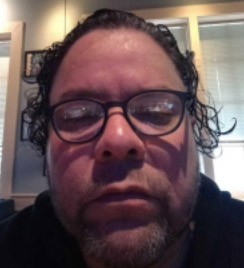106 W Commerce Spotlight: Community Design Advocates, Arthur Anguiano
Over the coming weeks, we will be highlighting each one of the Community Design Advocates, whose goal it is to broaden and deepen this project’s connection and responsiveness to the various communities it serves. Each story will detail this important work to better understand why they are involved in this project, what they hope the messages they’re hearing will mean for the site and to get to know them all a little better. This week we highlight Arthur Anguiano.
To follow read our original story on this series, click here.

Arthur Anguiano
Interview Questions
Q. Tell us a little bit about your background, what were you doing prior to joining Trinity Park Conservancy?
A. My primary purpose is to be creative and artistic, because that’s always been around I would like to get back to the creative edge of being a full time artist.
Q. What sparked your interest in getting involved with the Conservancy?
A. I thought it would be something to do in the community and I wanted to be a part of that.
Q. What’s your favorite way to enjoy the Trinity River? What are some of your favorite activities?
A. Back in the day when I had my dog, it was nice to let my dog run around and enjoy the view of the river.
106 W Commerce Interview Questions
Q. What does 106 W Commerce mean to you?
A. Every time I drive across the bridge or I’m in the area I remember my time at Lew When we would play basketball I would look at Dawson. I always wondered what was over there. I always wondered what its purpose was. It was unknown to me but I knew everything else around it. When they closed Dawson I always wondered what they would do with it.
Q. What would you like the building to represent in the future?
A. A beacon of prosperity and progression.
Q. What does design justice mean to you? How can the Conservancy utilize design justice practices with 106 W Commerce?
A. To me, it means perspective from an artistic view of justice. Imagination and creativity are ways they can use design justice like symbolism throughout the design. Whoever is designing isn’t just designing for themselves, they are thinking with the community in mind, too.
Q. How would you encourage others to challenge current systems of injustice?
A. Cognitive intervention in society. A way people could go through peer to peer education. There’s so much to learn. If there are people to share their wisdom and teach others, I think that would be a great asset.
Q. What are some major misconceptions about formerly incarcerated individuals you would like to address?
A. When I look for work, I have to ask if they discriminate against those who have All of us are sinners, no matter what law or conviction. Discrimination and misconceptions are so prevalent. Places say they are equal opportunity employers but they discriminate against those who have backgrounds. I wish I could talk to the heads of companies and ask them if they would like a second chance. People just have to learn from their choices.
Q. What are some barriers after release some people don’t consider or even think about?
A. When they’re released some don’t have any of their identification paperwork, birth certificates, social security cards and these people have to look for somewhere to live. How will they find work or housing without their legal documents? People are sort of set aside.
Q. What kind of impact do you hope the future of building will have on the City and on Harold Simmons Park?
A. I hope it’ll be there for a long time. I hope it will have a positive impact and has a good soul and can be a staple of Dallas.
Dallas favorites
- Favorite Dallas restaurant?
- Pappadeaux
- What’s your favorite park in Dallas?
- Lake Cliff Park
